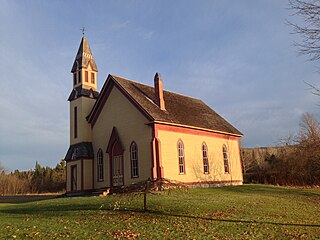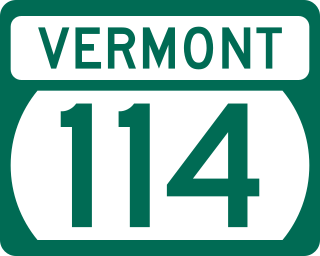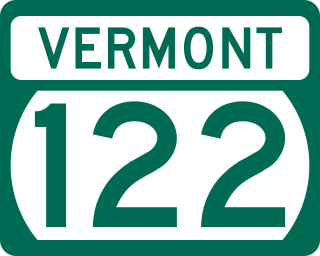
Caledonia County is a county located in the northeastern part of the U.S. state of Vermont. As of the 2020 census, the population was 30,233. Its shire town is the town of St. Johnsbury. The county was created in 1792 and organized in 1796. It was given the Latin name for Scotland, in honor of the many settlers who claimed ancestry there.

Burke is a town in Caledonia County, Vermont, United States. The population was 1,651 at the 2020 census. The town contains the villages of East Burke, West Burke and Burke Hollow. The town is home to Burke Mountain and Burke Mountain Academy.

Danville is a town in Caledonia County, Vermont, United States. The population was 2,335 at the 2020 census. The primary settlement in town is recorded as the Danville census-designated place (CDP) and had a population of 385 at the 2020 census.

Lyndon is a town in Caledonia County, Vermont, United States. As of the 2020 census, the population was 5,491. Lyndon is the home of Lyndon State College. The town contains one incorporated village, Lyndonville, and four unincorporated villages: Lyndon Corner in the south, Lyndon Center in the center of town on the west side of Lyndonville, Little Egypt in the north, and East Lyndon in the southeast.

Peacham is a town in Caledonia County, Vermont, United States. The population was 715 at the 2020 census.

Ryegate is a town in Caledonia County, Vermont, United States. The population was 1,165 at the 2020 census. The town contains the villages of South Ryegate, East Ryegate, and Ryegate Corner.

Stannard is a town in Caledonia County, Vermont. The population was 208 at the 2020 census. The town has no paved roads.

Waterford is a town in Caledonia County, Vermont, United States. The population was 1,268 at the 2020 census.
West Burke is a village in the town of Burke, Caledonia County, Vermont, United States. The population was 281 at the 2020 census.

Wheelock is a town in Caledonia County, Vermont, United States. The population was 759 at the 2020 census.

Brighton is a town in Essex County, Vermont, United States. The population was 1,157 at the 2020 census. The town was named "Gilead" in its original grant in 1780. The town was sold to a group consisting primarily of soldiers commanded by Colonel Joseph Nightingale and subsequently named "Random". The town's name was finally changed by the legislature to "Brighton" in 1832. The Brighton village of Island Pond gets its name from the Abenaki word Menanbawk, which literally means island pond.

Rockingham is a town along the Connecticut River in Windham County, Vermont, United States. As of the 2020 census, the population was 4,832. Rockingham includes the incorporated villages of Bellows Falls and Saxtons River, as well as a large rural area west of Interstate 91.

St. Johnsbury is the shire town of Caledonia County, Vermont, United States. As of the 2020 census, the population was 7,364. St. Johnsbury is situated on the Passumpsic River and is located approximately six miles northwest of the Connecticut River and 48 miles (77 km) south of the Canada–U.S. border.

Vermont Route 114 (VT 114) is a 53.094-mile-long (85.447 km) north–south state highway in northeastern Vermont in the United States. It runs northward from U.S. Route 5 (US 5) in Lyndon until nearing the Canada–United States border in the town of Norton; thereafter, the road continues east to the New Hampshire state line in Canaan. The vast majority of VT 114 is situated within Essex County; however, the route also passes through small, isolated portions of Caledonia and Orleans Counties.

The Passumpsic River is a 22.7-mile-long (36.5 km) tributary of the Connecticut River, in Vermont. Though primarily a Caledonia County river, it is the only river to flow through all three counties of the Northeast Kingdom.

Parameters Harvey Lake, locally known as Harvey's Lake, is a lake in the town of Barnet, Vermont in Caledonia County in the northeast section of Vermont, United States. It was named after one of the original settlers of Barnet, Vermont, Colonel Alexander Harvey. Although locally it is known as "Harvey's Lake", it is officially named "Harvey Lake" by the federal Board on Geographic Names, as genitive apostrophes are rarely allowed in the names of natural features.

U.S. Route 5 (US 5) is a part of the United States Numbered Highway System that runs from New Haven, Connecticut, to the Canada–United States border at Derby Line, Vermont. In Vermont, the road runs south–north from the Massachusetts state line near Guilford to the international border. The 192.317 miles (309.504 km) that lie in Vermont are maintained by the Vermont Agency of Transportation (VTrans) and run largely parallel to Interstate 91 (I-91). US 5 also follows the path of the Connecticut River from the Massachusetts border to St. Johnsbury, where the river turns northeast while US 5 continues north. The highway serves the major towns of Brattleboro, Hartford, and St. Johnsbury, along with the city of Newport near the Canadian border.
McIndoe Falls is an unincorporated community within the town of Barnet, Vermont, in the United States. It is located in the southeastern corner of Barnet, along the Connecticut River, the state boundary with New Hampshire. A dam on the Connecticut River at the village forms the McIndoes Reservoir, which extends upstream to the village of Barnet.

Vermont Route 122 (VT 122) is a state highway in the U.S. state of Vermont. The highway runs 15.215 miles (24.486 km) from U.S. Route 5 and VT 114 in Lyndon north to VT 16 in Glover. VT 122 connects Lynch and the towns of Wheelock and Sheffield in Caledonia County with Glover in Orleans County. The highway has an alternate route in Lyndon that provides access to Lyndon State College.
Sheffield is the primary village and a census-designated place (CDP) in the town of Sheffield, Caledonia County, Vermont, United States. It was first listed as a CDP prior to the 2020 census.
























